by Larry Jordan
on April 28, 2009
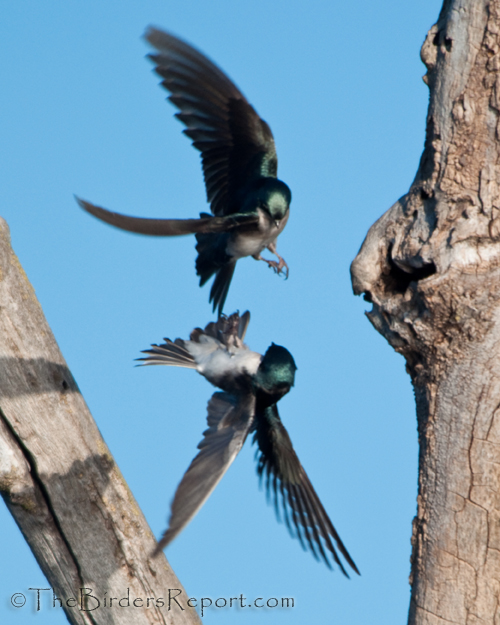 Tree Swallow Acrobatics all photos by Larry Jordan
Tree Swallow Acrobatics all photos by Larry Jordan
Tree Swallows are one of my favorite cavity nesting birds for several reasons. The primary reason is their incredible acrobatic flying skills. Of course all of the swallow family Hirundinidae are masters of the air. When you see the maneuvers they perform you know why God created birds in the first place.
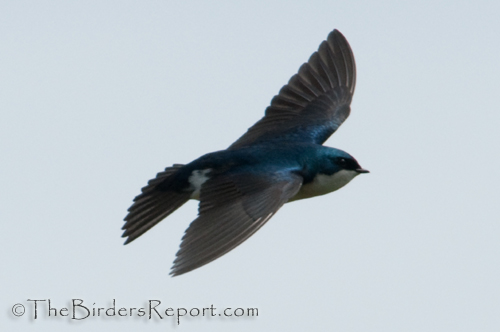
Tree Swallows are the first cavity nesting bird arriving in Northern California in mid-March to early April from their non-breeding winter grounds in Southern California, Mexico and Central America (see range map below).
They will nest in natural tree cavities or take readily to man-made nest boxes. We have large oak trees near the Sacramento River here that house entire colonies of Tree Swallows.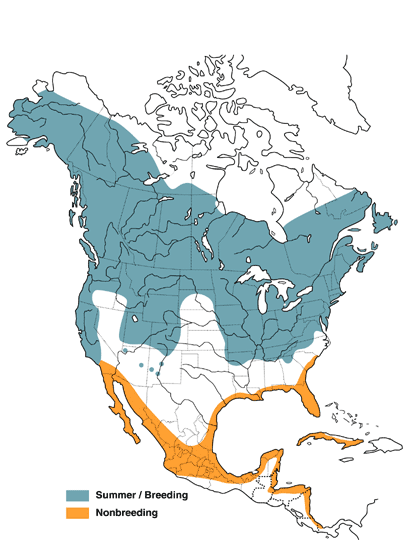
Being strong defenders of their homes, Tree Swallows will coexist with Western Bluebirds on Bluebird Trails and help deter predators if nest boxes are placed closer than 100 yards apart. I find that placing nest boxes at least 100 feet apart where Tree Swallows are present gives both species room to raise their young. You may also pair up your nest boxes by placing two boxes 25 feet apart with the next pair being 100 yards away from the first.
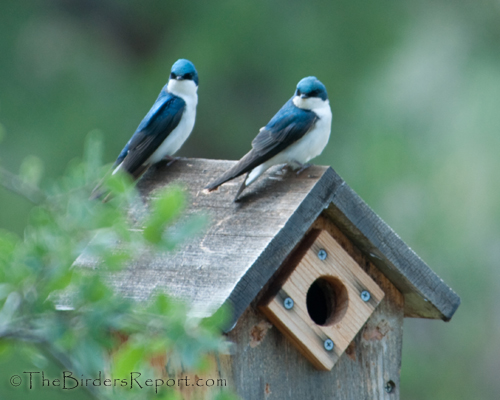 Tree Swallow Pair with Recently Hatched Chicks
Tree Swallow Pair with Recently Hatched Chicks
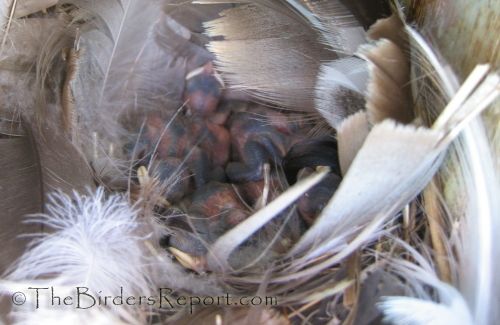
Tree Swallows lay 4 to 7 eggs which they incubate for about two weeks. The chicks fledge in another 3 weeks. Before the chicks fledge the female often sticks her head out the entrance hole as the male guards the nest. When monitoring the nest box, both adults will usually divebomb you, as they would any other intruder. This can be a bit unnerving the first few times. This is what they look like as they come zooming in at you.
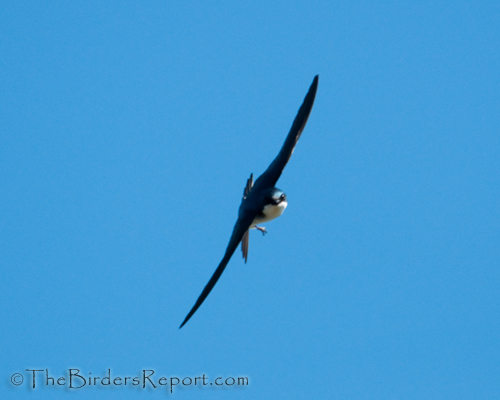
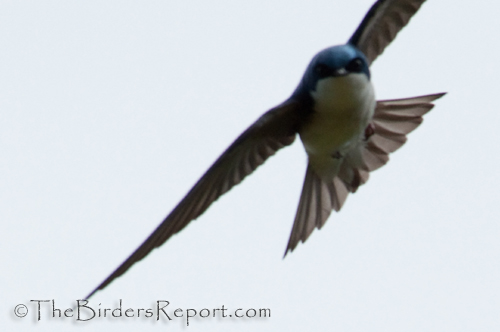
Always showing off those incredible aerial acrobatic skills. They never make contact though so simply enjoy the show.
If you are interested in building and monitoring birdhouses, check out my page on Nest Box Plans and the Monitoring Guide. Also check out the best Bluebird site on the internet for information on all things Bluebird from my friend Bet over at Sialis.org.
You will also want to check out the other IATB #99 posts and Skywatch Friday.
{ }
by Larry Jordan
on April 26, 2009
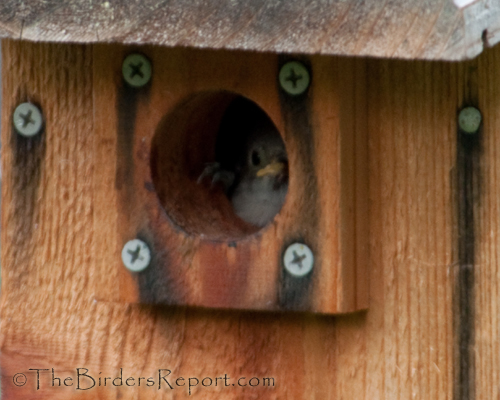 Oak Titmouse Chick all photos by Larry Jordan
Oak Titmouse Chick all photos by Larry Jordan
The Oak Titmouses are always the first cavity nesting birds building their nests early in the spring in Northern California, around the second week of April. They are followed closely by Western Bluebirds and Tree Swallows. The Ash-throated Flycatchers don’t arrive in our area until late April, when the Oak Titmouses are ready to fledge. This arrangement works well with this particular group of cavity nesting birds as they can all use the same size birdhouse. Just make sure you have enough nest boxes to go around!
As I reviewed my nest box monitoring records for this season I realized that I had one Oak Titmouse with chicks that should be fledging today. When I went down to observe the nest box, the first thing I saw was a 17 day old chick peeking out the entrance hole in the image above. Notice it still has the yellow bill. Most chicks will show this behavior when it is time to fledge but some adult birds hang their heads out the entrance hole often while incubating or brooding. I thought it would be fun to show you some of the adults I have captured peeking out their entrance holes.
The biggest “peeker” I have found is the Tree Swallow. They seem to always be hanging their heads out the window.
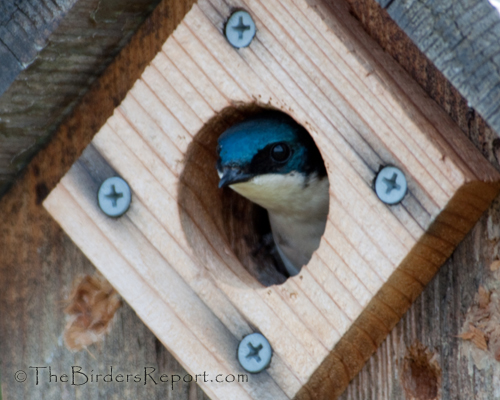
I discovered an Acorn Woodpecker nest this spring and they can be seen often also.
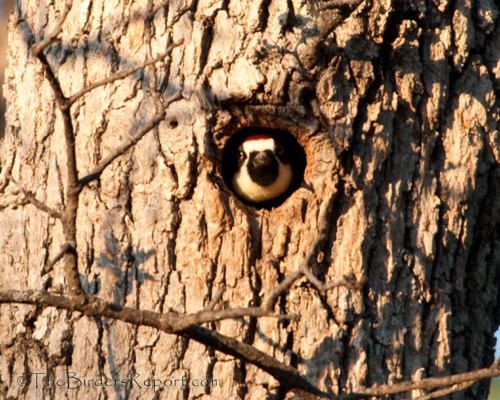
And my friend, the Great Horned Owl
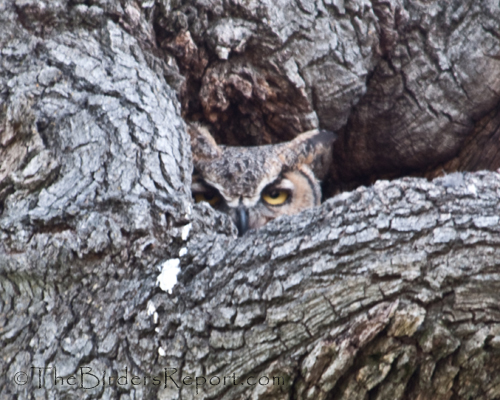
This Western Bluebird at my Mom’s is still in the process of laying eggs
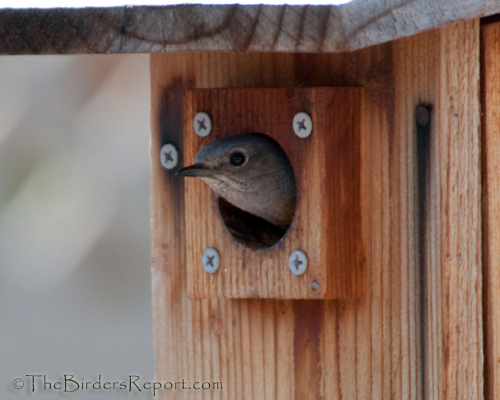
The remaining photos are birds going in and out of their nest sites feeding their young. The White-breasted Nuthatch, Oak Titmouse and European Starling.
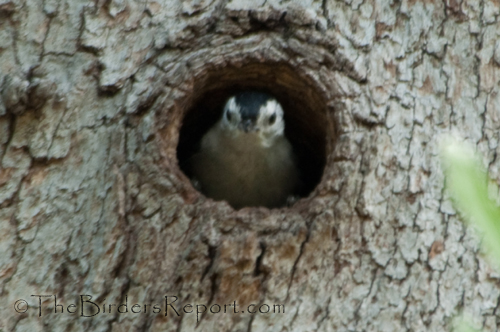
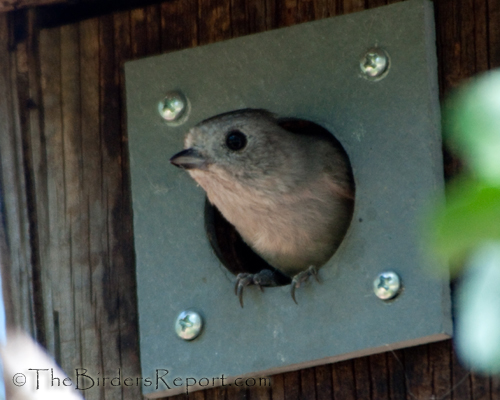
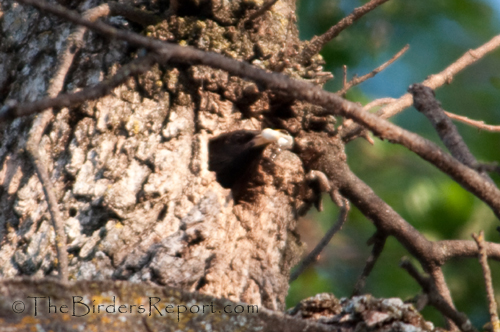
This starling is carrying a fecal sac out of the nest. This is common practice for cavity nesting birds, helping to keep the nest clean.
Go check out the other great bird photographs at Bird Photography Weekly!
{ }
by Larry Jordan
on April 23, 2009
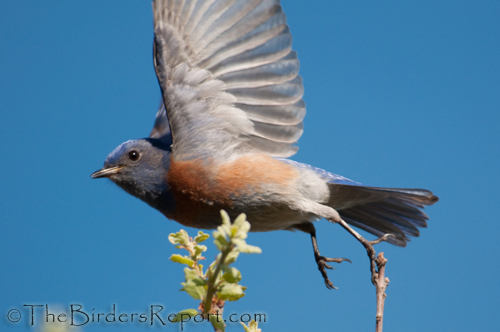 Western Bluebird Taking Flight all photos by Larry Jordan
Western Bluebird Taking Flight all photos by Larry Jordan
Spring is definitely here. I have been hearing Ash-throated Flycatchers singing in the morning for the last few days! What a beautiful sound. One of my Oak Titmouses hatched young a couple of weeks ago and I have three more brooding (photos to come later I’m sure). And Western Bluebirds are beginning to hatch! Below is a typical pose for the male bluebird as he claims a birdhouse.
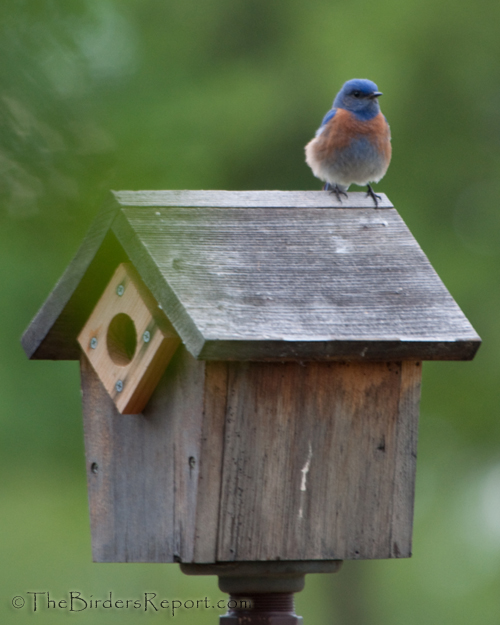 Once the pair decides on a home, they will take 2 to 6 days to build a nest and begin laying an egg a day, usually laying a total of 4 to 7 eggs in the first clutch.
Once the pair decides on a home, they will take 2 to 6 days to build a nest and begin laying an egg a day, usually laying a total of 4 to 7 eggs in the first clutch.
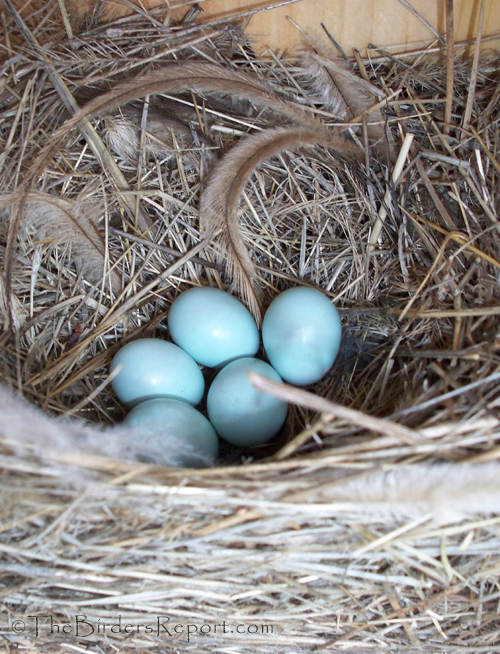 The Western Bluebird incubation time is usually 12 to 14 days. Here are a couple of photos of some 3 or 4 day old chicks. Aren’t they cute?
The Western Bluebird incubation time is usually 12 to 14 days. Here are a couple of photos of some 3 or 4 day old chicks. Aren’t they cute?
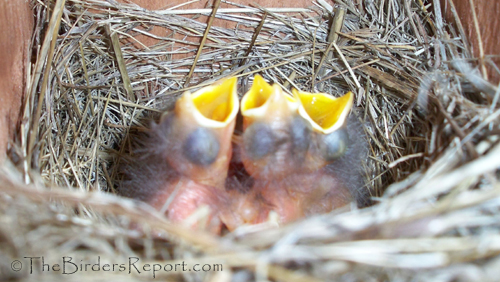 These bluebird chicks are nearly naked having just a bit of fuzzy down, and their eyes are still closed. In the photo above, they thought I was one of the parents bringing food. The other nestlings below must have recently eaten and look like they may be sleeping. Notice that some nests may have several feathers in them and others none.
These bluebird chicks are nearly naked having just a bit of fuzzy down, and their eyes are still closed. In the photo above, they thought I was one of the parents bringing food. The other nestlings below must have recently eaten and look like they may be sleeping. Notice that some nests may have several feathers in them and others none.
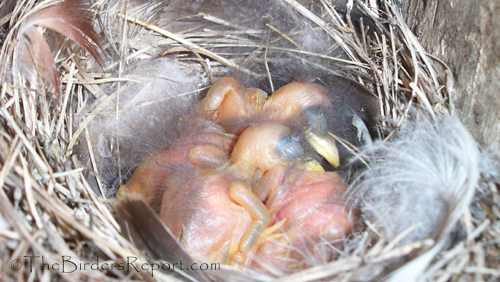
I will keep you updated on all of my cavity nesters in upcoming posts. Make sure to check out my page on Egg and Nest Identification in the right side panel. And be sure to go to Skywatch Friday for more great skywatch photos.
{ }
by Larry Jordan
on April 19, 2009
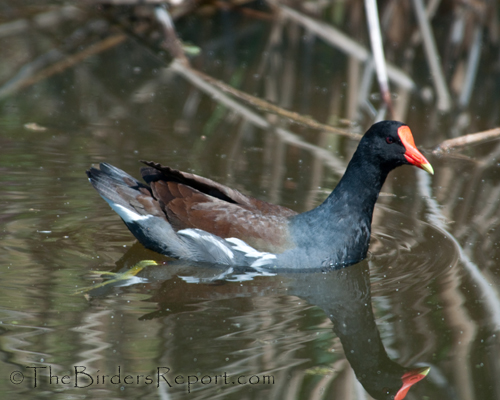 Common Moorhen Male photos by Larry Jordan
Common Moorhen Male photos by Larry Jordan
I was fortunate to find this male Common Moorhen moving slowly through a narrow waterway connecting two ponds at Lema Ranch the other day. As I followed it, the bird didn’t seem too interested in me and I soon found out why. He had a mate nearby.
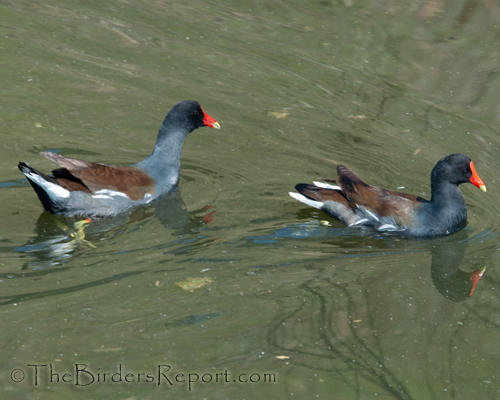
I believe he had more important things on his mind.
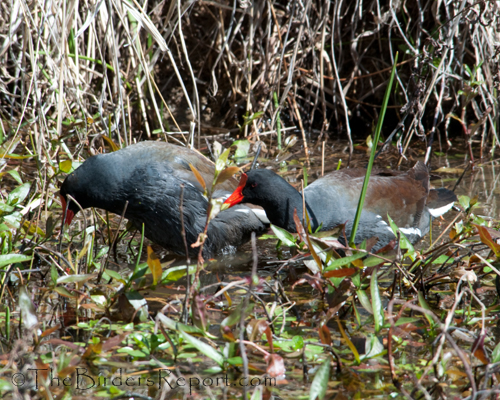
After all it is Spring
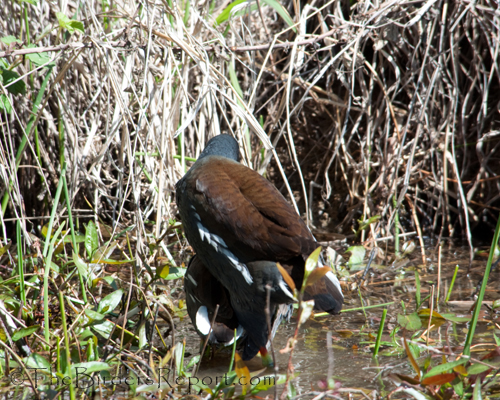
And what better way to celebrate than a bit of afternoon delight?
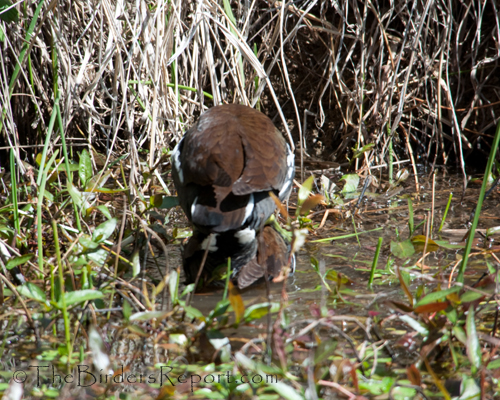
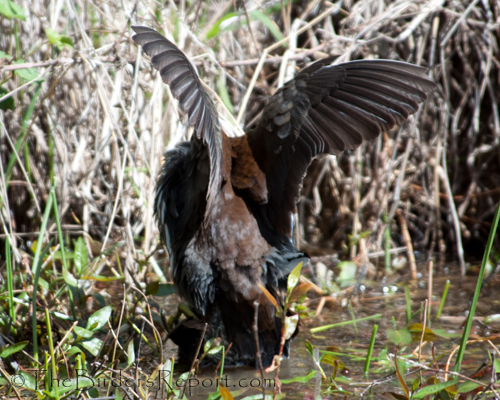
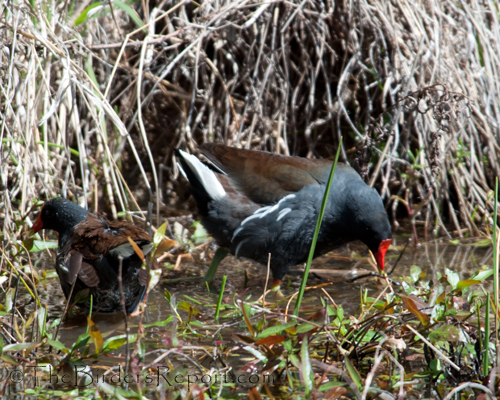
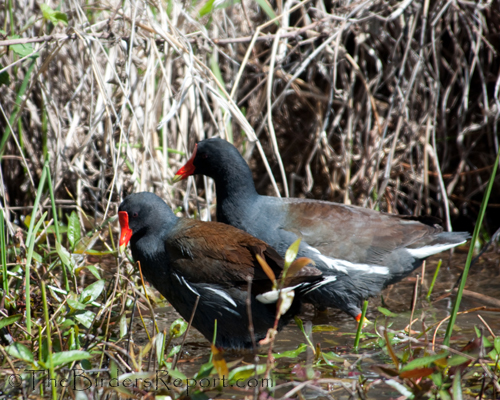
And what’s better than a nice refreshing bath afterward
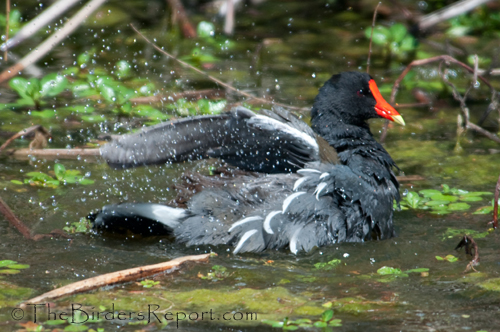
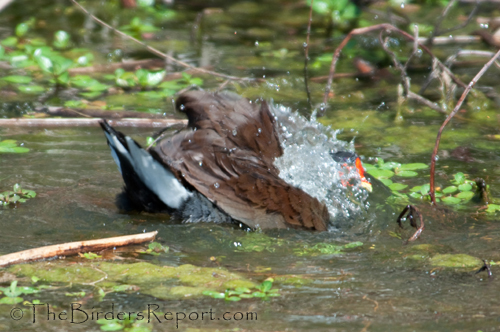
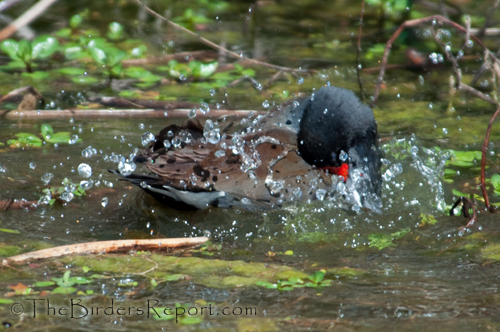
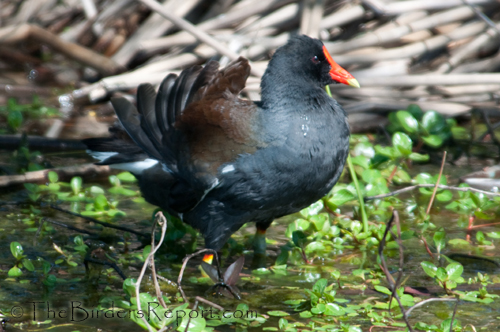
And off we go for a walk and a swim with my mate (I just wanted to show off my cool green feet).
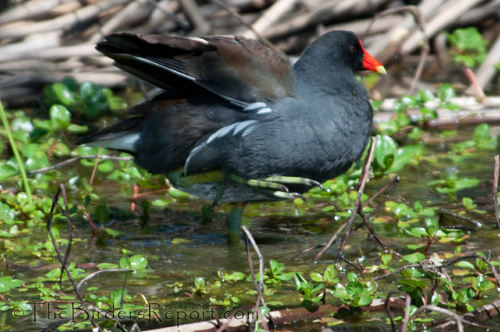
To see more great bird photos, get on over to Bird Photography Weekly!
{ }
 Tree Swallow Acrobatics all photos by Larry Jordan
Tree Swallow Acrobatics all photos by Larry Jordan

 Tree Swallow Pair with Recently Hatched Chicks
Tree Swallow Pair with Recently Hatched Chicks



 Oak Titmouse Chick all photos by Larry Jordan
Oak Titmouse Chick all photos by Larry Jordan






 Western Bluebird Taking Flight all photos by Larry Jordan
Western Bluebird Taking Flight all photos by Larry Jordan Once the pair decides on a home, they will take 2 to 6 days to build a nest and begin laying an egg a day, usually laying a total of 4 to 7 eggs in the first clutch.
Once the pair decides on a home, they will take 2 to 6 days to build a nest and begin laying an egg a day, usually laying a total of 4 to 7 eggs in the first clutch.
 These bluebird chicks are nearly naked having just a bit of fuzzy down, and their eyes are still closed. In the photo above, they thought I was one of the parents bringing food. The other nestlings below must have recently eaten and look like they may be sleeping. Notice that some nests may have several feathers in them and others none.
These bluebird chicks are nearly naked having just a bit of fuzzy down, and their eyes are still closed. In the photo above, they thought I was one of the parents bringing food. The other nestlings below must have recently eaten and look like they may be sleeping. Notice that some nests may have several feathers in them and others none.













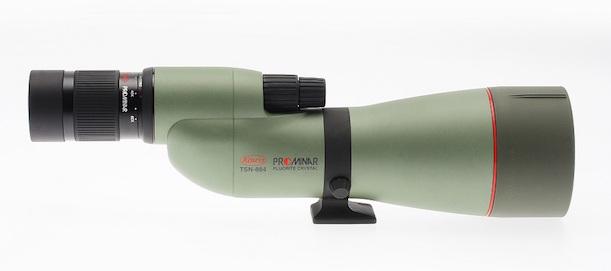


Social Media Connect